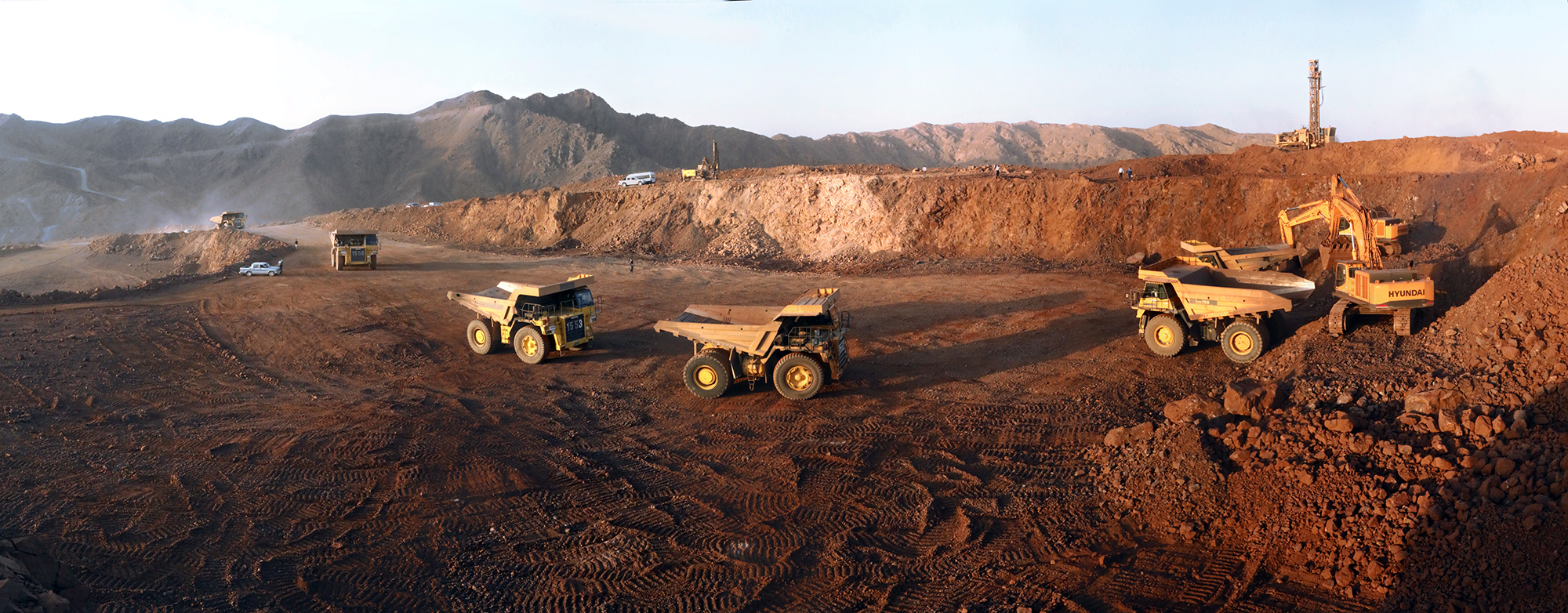The Iranian iron ore sector has experienced tough times in the last few years.
“Of the 145 small and medium iron ore mines operating in the fiscal year 2013-14, only nine are still producing,” Bahram Shakouri, the deputy head of Iranian Iron Ore Producers and Exporters Association, was quoted as saying by Bourse Press.
The official noted that small and medium mines had created close to 8,000 jobs, at least 5,000 of which were lost following the mines’ closure.
Shakouri said Iran produced close to 52 million tons of iron ore in 2013-14, 65% of which were made by small and medium mines.
“The smaller mines also accounted for 85% of the sector’s employment,” he added.
According to Sajjad Ghoroqi, a member of IROPEX, private miners control over 60% of Iranian mines with less than 1 million tons of reserves.
“The rest, with reserves from 1 to over 50 million tons, are either completely state-owned or run by quasi-state entities,” he said.
Nearly all small mines are privately-owned and susceptible to closure under the current tough market conditions. Most of the operational iron ore mines, however, are state-owned and capable of weathering financial hardships by sweeping potential losses under the rug.
Shakouri believes that high taxes and improper policymaking are the root causes of most of the mining industry’s woes.
“Depressed global mineral prices, export restrictions, high royalties, rising taxes and lack of crucial infrastructure such as water, electricity and rail transportation have all caused Iran’s mining industry to lose its competitive edge, leading to loss of jobs and lower productivity,” he said.
Depressed Iron Ore Prices
Iron ore prices came out of 2015 the lowest in years, as it dropped to about $30 per ton in December. The steelmaking material took on a positive trend early last year and over signs of China’s cutbacks in its steelmaking capacity reached $60-65.
The commodity continued its seesaw trend until it started to rise sharply in late 2016 and hit highs reaching up to $90 per ton, according to Markets Insider tracking the industry standard NYMEX 62% Fe CFR China.
However, bears eventually returned to the markets as iron ore started spiraling in a full-scale retreat ever since April amid concerns about demand outlook in China, fresh signs of higher supplies from Australia and the hostile crescendo of a broad-based selloff in base metals.
On China’s Dalian Commodity Exchange, iron ore for September delivery lost 7.3%, the maximum daily drop allowed, while in Singapore, SGX AsiaClear futures fell as much as 9.1% to $60.37 per ton.
Spot ore with 62% content in Qingdao slid 5.1% to $65.20 a dry ton, extending this year’s decline to 17%, Metal Bulletin reported.
Punitively High Taxes
To make up for the global downtrend, the Iranian government is charging unreasonably high mining royalties and usufruct fees, according to Shakouri.
“The government forecasted to receive 18 trillion rials ($473.68 million) in royalties in 2013-14, only 25% of which were realized. They dropped their target to 15 trillion rials ($394.7 million) next year and again, got only paid 3.3 trillion rials ($86.8 million). The same scenario unfolded last year as the government only received 3.58 trillion rials ($94.2 million) of its 9-trillion-rial ($236.8 million) target.”
On top of the high royalties, which affects private mines more than large state-owned ones, the government recently ratified a law to oblige mine owners to pay 1% of their total sales as environmental tax. Miners are up in arms about it, decrying that the move will impede the sector’s feeble growth and drive smaller mines out of business.
Even when the government does collect the mining tax forcefully, the money is spent on unemployment insurance of jobless miners.
According to Shakouri, the government paid close to 3.6 trillion rials ($94.73 million) in the form of unemployment insurance to workers.
This is while the mining sector paid 3.58 trillion rials ($94.2 million) in royalties.
Shakouri argues that fewer miners would have been out of work and the government would have actually earned more money, if taxes were lowered.
Iron Ore Production, Trade Last Year
Iran produced 32.59 million tons of iron ore concentrate in the last fiscal year (March 2016-17), up 26.31% year-on-year; 5.93 million tons of granulated iron ore, down 16.33%; 25.8 million tons of pellet, up 17.31%; and 16.39 million tons of direct-reduced iron, up 8.62%.
The country exported 21.10 million tons of iron ore worth $818 million during the same period, up 55% and 56% in tonnage and value respectively. Imports stood at 65,481 tons valued at $7 million, down 94% and 93% respectively, according to Iranian Mines and Mining Industries Development and Renovation Organization.


